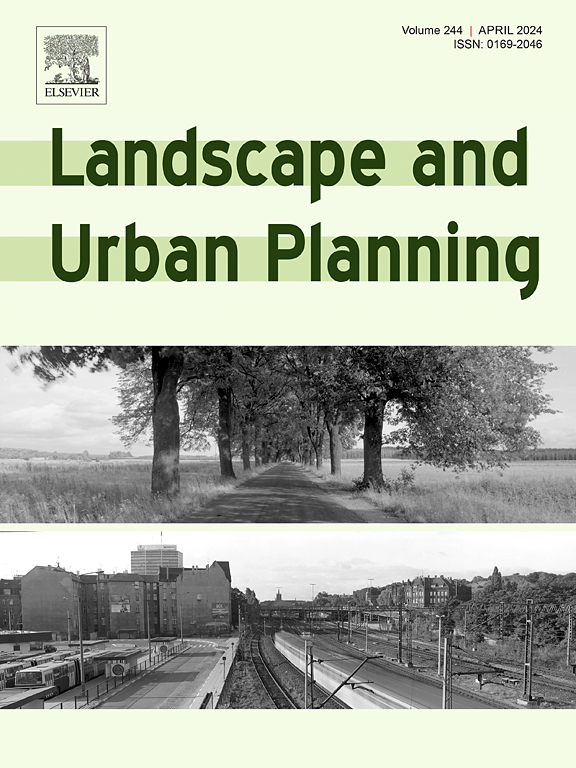Multi-species ecological network based on asymmetric movement: Application in an urban rural fringe
IF 7.9
1区 环境科学与生态学
Q1 ECOLOGY
引用次数: 0
Abstract
Ecological network (EN) is a popular approach for biodiversity conservation, which aims to facilitate animal movement between habitats. However, asymmetric movement caused by the subjectivity of animals and environment heterogeneity is seldom considered in EN design. To design EN based on asymmetric movement, an individual-based model, PDArunner, is developed, which can identify corridors based on explicit movement paths. Since the urban–rural fringe is susceptible to landscape change, a multi-species EN based on asymmetric movement is designed for Jinnan district, Tianjin, China by simulating movement of Mustela sibirica, Spilopelia chinensis and Gallinula chloropus using PDArunner. Asymmetric movement is partitioned based on the size of departure and arrival habitats. Asymmetric corridors are thus identified based on movement in particular direction. In Jinnan, successful transfer rate of focal species from small to large habitat increases with difference in habitat size. The spatial extent of asymmetric corridors is more concentrated for G. chloropus. There are more corridors from large to small habitats than in the opposite direction, especially for S. chinensis and G. chloropus. There are more one-way corridors for S. chinensis and G. chloropus than M. sibirica. Perceptible high vegetation coverage places with large enough contrast to environment are suggested to be consecutive within 50 m for M. sibirica in Jinnan, which also benefits S. chinensi. G. chloropus can benefit from well-conserved water quality and quantity. A cross-administration collaboration is also highlighted for large scale conservation.
基于不对称运动的多物种生态网络:在城乡边缘地区的应用
生态网络(EN)是保护生物多样性的一种常用方法,旨在促进动物在栖息地之间的移动。然而,在设计生态网络时,很少考虑动物的主观性和环境的异质性所导致的非对称移动。为了设计基于非对称移动的 EN,我们开发了一个基于个体的模型 PDArunner,它可以根据明确的移动路径识别走廊。由于城乡边缘地带易受地貌变化的影响,因此通过使用 PDArunner 模拟西伯利亚鼬、滇金丝猴和绿孔雀的运动,为中国天津津南区设计了基于非对称运动的多物种环境。根据出发和到达栖息地的大小对非对称运动进行了划分。因此,根据特定方向的移动确定了非对称走廊。在晋南,随着栖息地大小的不同,焦点物种从小栖息地向大栖息地转移的成功率也随之增加。非对称走廊的空间范围更集中于氯斑羚。从大栖息地到小栖息地的走廊多于相反方向的走廊,特别是对中山杉和绿僵菌而言。与西伯利亚鹅掌楸相比,鹅掌楸和鹅掌楸的单向走廊更多。建议在晋南 50 米范围内连续出现植被覆盖率高、与环境反差大的地方,这也有利于金丝猴。水质和水量得到很好的保护,可使绿僵菌受益。跨部门合作也是大规模保护的重点。
本文章由计算机程序翻译,如有差异,请以英文原文为准。
求助全文
约1分钟内获得全文
求助全文
来源期刊

Landscape and Urban Planning
环境科学-生态学
CiteScore
15.20
自引率
6.60%
发文量
232
审稿时长
6 months
期刊介绍:
Landscape and Urban Planning is an international journal that aims to enhance our understanding of landscapes and promote sustainable solutions for landscape change. The journal focuses on landscapes as complex social-ecological systems that encompass various spatial and temporal dimensions. These landscapes possess aesthetic, natural, and cultural qualities that are valued by individuals in different ways, leading to actions that alter the landscape. With increasing urbanization and the need for ecological and cultural sensitivity at various scales, a multidisciplinary approach is necessary to comprehend and align social and ecological values for landscape sustainability. The journal believes that combining landscape science with planning and design can yield positive outcomes for both people and nature.
 求助内容:
求助内容: 应助结果提醒方式:
应助结果提醒方式:


